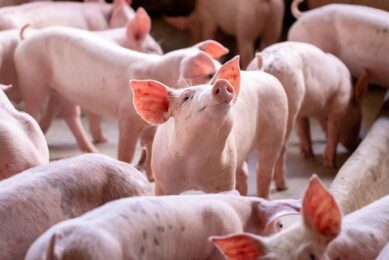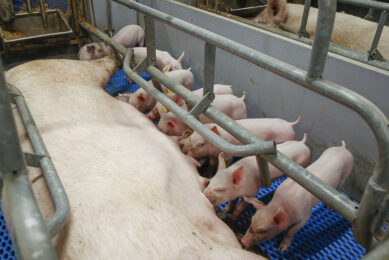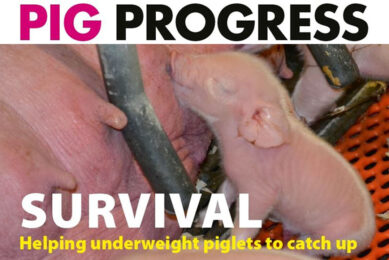Colostrum (III): Immunity’s A to Z

The third in the series of columns by John Gadd on colostrum. In this column John looks at immunity.
EXPERT
Immunity is defined as ‘the condition of being immune (i.e. secure) against a particular disease’. In addition, it means ‘being non-susceptible to invasive harmful micro-organisms and toxins.’
There are scores of people in the world who know far more about immunity than myself. So why have I the temerity to write about this complicated but vital subject?
Why this concise A to Z?
Interest in immunity started for me as long ago as the early 1960s, when I came across what I called ‘won’t-go-away diseases’ which responded to treatment but kept on coming back again and again after a few weeks. But when bulk feed bins were cleaned twice a year – then they stayed away. My introduction to the effect of mycotoxins on immunity, now well-proven.
This led on, in the 1970s, to encourage what we called ‘natural resistance’, several of which worked best in the baby pig (colostrum) and involving age and weight of weaning.
By the 1980s the value of adequate colostrum was fully recognised, although producers needed to provide more time to effect it fully. This has a carry-over today on many units where surveys suggest that only 8% hours/sow/year are afforded to the baby pig, when from experience I suggest it should be 18%. Proper colostrum management involves ample time given to it.
Then the Americans, worried about viral diseases, started to vaccinate against every likely disease. Promoted by the vaccine firms and some vets, the end result was ‘immunity overload’ which had an opposite effect. The solution was to use a vet who knew the farm intimately so as to establish a disease protocol and only use the appropriate vaccine which his diagnostic tests and local experience suggested.
Then came the era of realising two things – how much mycotoxins and too much stress impact immunity. Nowadays we realise the importance of employing an experienced pig veterinary practice so as to get immunity levels targeted correctly. Expensive, sure, but with a payback of over 5:1 from less disease. Ready? Here we go!
Active immunity
After exposure to infection, stimulated antibodies remain in the sow which are transferred to the offspring via colostrum for a while. The dam is active in passing the immunity.
Antibodies
Protein structures (IgA, IgM etc.), which fight the harmful antigens and unless overwhelmed, prevent disease.
Antigens
Foreign materials which trigger the body’s defence mechanism – these can be harmful pathogens or protective vaccines. So antigens can be either beneficial or harmful.
Cytokines
‘Messenger’ proteins which control macrophages and lymphocytes.
Humoral immunity (B cells, lymphocytes)
Memory cells which remain behind after an infection, recognising the re-appearance of the pathogen, and quickly call up the correct defences again.
Immunoglobulins in colostrum
IgG (76%): Protects the neonate against invasion from outside body bacteria to which it has no immunity passed down by the mother.
IgA (17%): Protects the neonate’s internal linings (lungs/intestine) against bacteria.
IgM (7%): Protects against viruses and starts the neonate’s immune system.
In order to get sufficient immunoglobulins, target intake in the first 24-36 hours should be 400-500 g. This means 3 to 4 really good suckles, especially 2 within the first 12 hours after birth, and especially for the smaller, weaker pigs such as those born last.
Macrophages
Also known as ‘white blood cells’. Usually dormant in bone marrow which become actively mobile throughout the body when stimulated by inflammation, immune reactors and microbial products.
Passive immunity
The piglets accept the antibodies (i.e. they are passive) and this lasts as long as the maternal antibodies survive. However as no memory cells (lymphocytes) are provided or formed so the immunity is not permanent, so good management, attention and nutrition must take over.
Phagocytes
Cells which ingest and so destroy pathogens.
Systemic (or mucosal) immunity
Local humoral or cellular antibodies ideally present when body surfaces are exposed to the outside – nose, throat and outer reproductive tract.
Join 18,000+ subscribers
Subscribe to our newsletter to stay updated about all the need-to-know content in the pigsector, three times a week. Beheer
Beheer










 WP Admin
WP Admin  Bewerk bericht
Bewerk bericht